The Five Towns’ War: The Five Towns in The Second World War

Target -The Five Towns: 1
The Second World War began in September 1939 when the German Leader, Adolf Hitler, invaded Poland. Britain and France went to war to help Poland, but by July 1940 German armies had overrun most of Europe, forcing the British army to evacuate from Dunkirk to England. From airfields in Norway, Denmark and France, Hitler was now able to launch air attacks on British towns and cities. Even before the war, the Germans had prepared target maps and photographs of the objectives they wished to attack - not only army camps, airfields and naval dockyards but also industries that helped the British war effort. The chemical works in Castleford shown here was one such target for air attack.
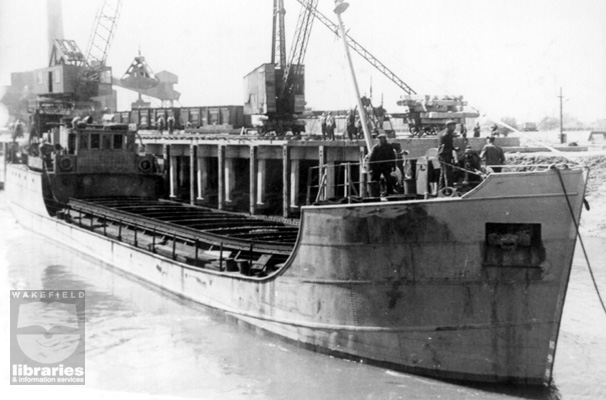
Target -The Five Towns: 2
Not only factories, but also methods of transport were targets for the bombers. Britain’s railways, canals and rivers were all used for transport much more in the 1940’s than they are today, and so they, and everything associated with them, became a target. The ship ‘Empire Rancher’ in this picture was built in Knottingley in 1943, and designed to carry coal from South Wales to help fuel war factories in Gloucester. Among the biggest ships built by Harkers Shipyard, she, and other ships made by Harkers, would have made the area a prime target for attack.
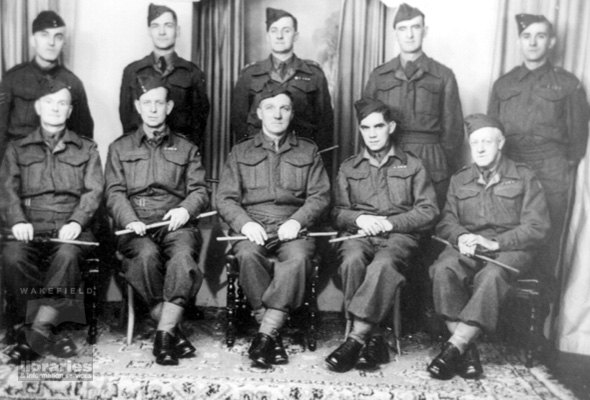
Defending the People: 1
From July 1940,Britain was the only nation left fighting Germany, and so was very aware that from that time onwards she might be invaded at any time. Accordingly, volunteer soldiers were called for, to form the ‘People’s Army’ of the Local Defence Volunteers (LDV), later called the Home Guard. It was formed mainly from older men, young boys, and men excused from military service because they were unfit or had jobs in war industries. The Home Guard were often used to defend important factories, collieries, and bridges, and later in the war to man anti-aircraft batteries. At first, they had few weapons and no uniform, but later were gradually issued with proper uniforms, kit, rifles, and machine-guns. This photo shows the Knottingley Home Guard during the War.
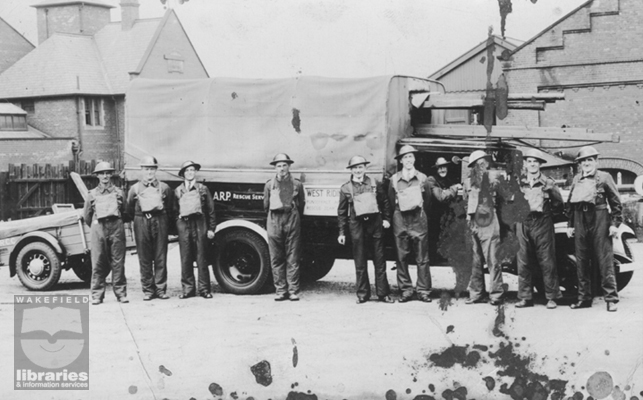
Defending the People: 2
Particularly important to the people of the Five Towns was the ARP, or Air Raid Precautions. Set up before the war, and controlled by the local councils, there were over 5,000 people in ARP across the whole of our area, most of them part-time volunteers, working in rescue services, ambulances and first-aid, emergency feeding teams and as air-raid wardens (people in every street who helped prepare shelters and summoned help when needed). Shown here are the ARP rescue services of Pontefract. In addition, there were the volunteers of the Auxiliary Fire Service, who aided the Fire Brigades, and Special Constables who aided the Police. These people usually had their own jobs to do as well as this voluntary work. The rescue teams could be posted to help cities that had suffered heavy attacks, and the local teams went to the aid of Sheffield, Hull and Salford at different times.
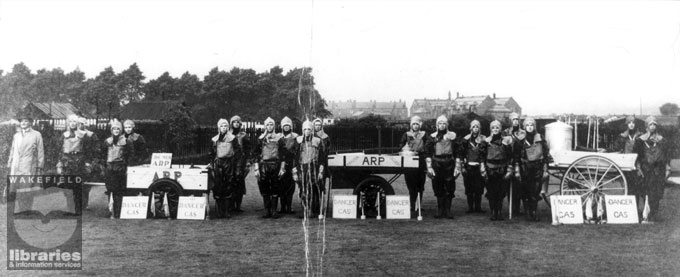
Defending the People: 3
Even before the war, people were afraid of attacks by poison gas, because poison gas had been widely used in the First World War only 20 years before. As a result, major preparations were made and everyone was given a gas mask - over 130,000 were distributed in the Five Towns by October 1938. Special squads were trained to deal with the effects of poison gases if they were used, including treating the residue of the gas with chemicals and then washing the residue away (called ‘decontamination’). This picture shows the Decontamination Unit of two local collieries, Allerton Bywater and Fryston. In the end, poison gases were never used in air attacks on Britain, perhaps because of fears of retaliation.
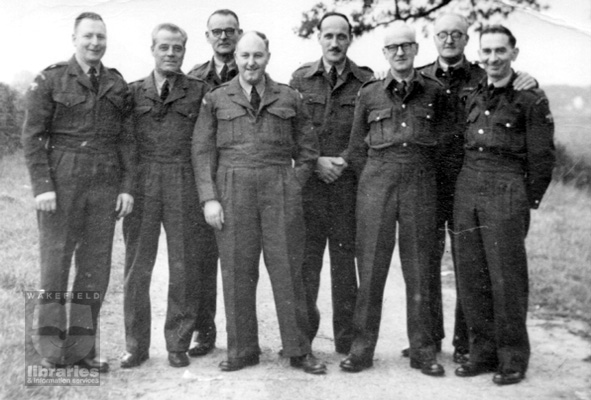
Defending the People: 4
At the beginning of the Second World War, the British had long-range radar stations on the coasts; these looked out to sea, but did not work inland. As a result, volunteers were used to track the progress of air attacks once the German bombers had crossed the coast, and these volunteers were formed into the Royal Observer Corps. Usually their posts were located on high ground with a good all-round view, and from here they identified, plotted and tracked the movements of all the aircraft they could see, reporting these movements by telephone to a central control. This photo shows the Knottingley Observer Corps whose post was at Kings Standard, near Cridling Stubbs.
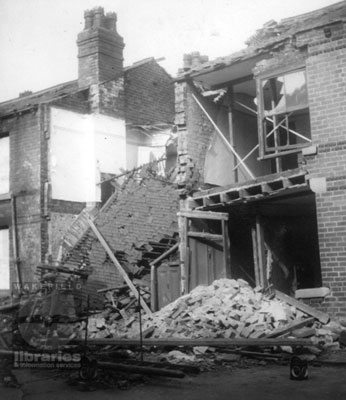
Attack on Castleford: 1
During a raid in March 1941 aimed at the steel and armaments industries in Sheffield, many German pilots missed their targets and attacked Leeds, Wakefield and Castleford instead. From half past midnight on the morning of 15 March, 50 high explosive and over 400 incendiary bombs fell on Castleford, particularly around Churchfields Lane and Ambler Street. Two people were fatally injured and another 17 had lesser injuries. Although many bombs fell on open spaces, five houses were wrecked, another 12 seriously damaged and 239 suffered some damage to windows, ceilings and roofs. This is a picture of a house in Ambler Street damaged that night.

Attack on Castleford: 2
In the same raid on 15 March 1941, this semi-detached house in Hill Road was destroyed, and other houses nearby can be seen to be badly damaged. On the same night, a bomb exploded next to the Whitwood Mining School shelter in Pontefract, but the only injury was caused to a man inside the shelter when the door fell on him! There were various ‘nuisance raids’ in the district, as on 6 August 1941, when one plane dropped 6 high explosive bombs and incendiaries around South Kirkby, without much effect; but worse was to come. On 9 August 1942, a further raid took place in Pontefract apparently by a lone raider driven back from Leeds, in which five high explosive bombs and a number of incendiaries were dropped injuring 22 people, damaging many homes and starting a big fire in part of Ewbanks liquorice works.
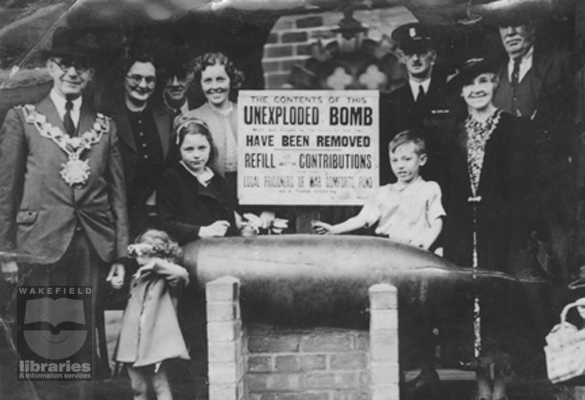
Fund Raising
There were many campaigns to collect money or to increase savings during the Second World War 2. In this photograph, the centrepiece of the campaign was the casing of a bomb, almost certainly the one dug out from Mayor’s Walk after the 9 August 1942 attack and defused. The aim was to fill the empty casing with money to support the Prisoners of War Comforts Fund. The Mayor, who led the scheme, is in the photograph, taken beside the Pontefract Buttercross with St. Giles’ Church in the background.

‘Wings for Victory’
This photograph shows a public meeting to support a ‘Wings for Victory’ war savings campaign in Castleford in 1943. In these campaigns the public was encouraged to save money, which would be used to purchase a particular aeroplane to support the war effort - in this case, a Halifax four-engined heavy bomber. There were many other drives to commit money towards weapons- one ‘Warship Week’ in the Wakefield area earned enough to purchase a destroyer, and HMS Bedouin was associated with Wakefield as a result. (HMS Bedouin had a distinguished career before being sunk in June 1942, while leading an attack of British destroyers against a superior force of Italian cruisers during a convoy to re-supply the island of Malta.)
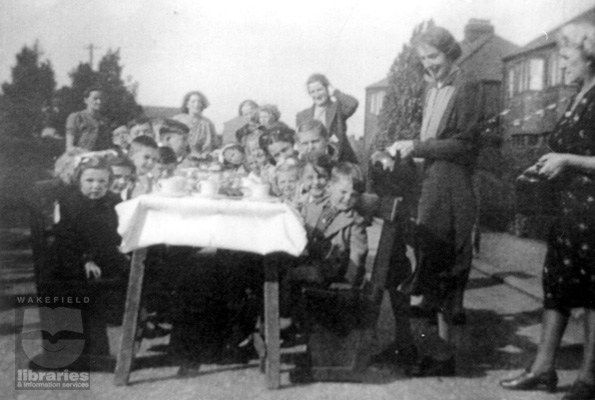
Celebrating the End of the War
After invading Europe on D-Day, 6 June 1944, the combined forces of Britain and America advanced through France into Germany, while Russian troops attacked Germany from the East. The German Leader, Adolf Hitler, shot himself in Berlin in May 1945, and the Germans surrendered. The Allies then turned to the Far East, and gained the surrender of Japan after use of the atomic bomb on two Japanese cities, Hiroshima and Nagasaki, in August 1945. Many street parties were held in Britain to celebrate the end of the war, and this one was in Springfields, Knottingley.
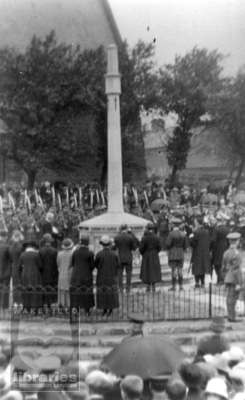
Remembrance
The number of British war dead was much less than in the First World War, but a significant number of civilians had died because of the bombing attacks - it was in every way a ‘People’s War’. Many returning prisoners of war, particularly those from the Far East prison camps, had suffered severely and died shortly after the War. This photograph shows one of the Five Towns’ many War Memorials: this one is at Saint Thomas Road, Featherstone.

